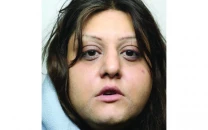The cost of saving lives
Many doctors are forced to perform surgical procedures at the barrel of a gun

Many doctors are forced to perform surgical procedures at the barrel of a gun. STOCK IMAGE
Dr Nadir Haider was a part of the neurosurgery team that scrubbed in immediately. About an hour later, shouts were heard outside the operation theatre and he went out to investigate. From behind a door, he saw that six armed men had entered the Emergency Department and were shouting at the administrator in charge that they had a wounded patient. Back in the operating theatre, the doctor who was performing the surgery didn’t waver from his spot but cautioned his team to hide.

The armed men made their way inside, walked past the sterile scrubbing area and pointed the gun at the resident surgeon, ordering him to help their companion who was shot. The surgeon maintained his control and firmly told them to leave immediately because he was in the middle of an operation and not only were they distracting him, they were also contaminating the area. The episode ended with the armed men beating up the operation theatre staff, who eventually fled. The patient from the car crash died on the table without being treated.
This incident is not at all unique. This is what doctors, nurses and other members of the medical staff at public health hospitals are forced to deal with daily in a crime-ridden city like Karachi.
Dr Haider has been a witness to many incidents like that one night in August. “I am expected to work in a very risky environment, and the average person blames me for everything that happened to a patient even before they reach the hospital. If I wanted an adrenaline rush, I would have joined the medical division of armed forces. The government and the hospital could do so much more to improve the security at these major emergency departments.”
Armed thugs regularly threaten doctors. In August 2012, an armed mob attacked a senior surgeon at Civil Hospital, Karachi following the death of a political worker. In December 2012, two armed wings of political parties had a shootout inside the emergency unit of the Jinnah Postgraduate Medical Centre (JPMC) in Karachi, rather emphatically highlighting medical workers’ need for security. The CCTV footage of the JPMC attack shows the medical teams running for cover while security officials were slow to respond. The culprits escaped easily.

In 2011, a nationwide study conducted by Mirza et al at the Aga Khan University Hospital (AKUH) found that 76.9 per cent of physicians from nine major tertiary care hospitals faced verbal or physical abuse from patients or their caretakers, and that male physicians are more likely to suffer abuse. Not surprisingly, the study reported that this has led to reduced job performance. More recently, in September 2013, Dr Jahanzeb Effendi from JPMC’s orthopedic and trauma surgery department spoke about the abuse of doctors at a conference hosted by The University of Chicago Center in Beijing. He told me that a lack of security just one aspect of a bigger problem. “There is a lack of training of patient counselling amongst junior doctors. Sometimes, under pressure or threats, they end up giving false hopes to the patient and their families. Also we cannot underestimate the issues arising due to language barriers. Moreover the media coverage is usually one-sided and this has led to a growing lack of faith and trust towards doctors.” He adds that this is not helped by senior physicians joining private practices and spending only a few hours at government hospitals, where he says they are most needed.
Dr Junaid Razzak, Head of the Emergency Department at AKUH also mentions poor communication as a factor. “Violence against healthcare providers has multiple reasons and sources. Some of them include poor care being provided or delays or inappropriate communication or no communication. Violence however, can never be justified. A system has to be evolved such that patients and their relatives have another way to share their anguish, unhappiness and complaints. If violence in a healthcare setting continues at the level it is or goes further up, we will have major problem retaining good doctors, nurses and technicians.”

SOURCE : Mirza et al, AKUH
Dr Saeed Minhas, who was the Chief Medical Officer at the Pakistan Institute of Medical Sciences (PIMS) Islamabad, and has seen his fair share of violent threats in the emergency room (ER), concurs with Dr Razzak. “Within emergency medicine, there is hardly any training or concept of dealing with patients, especially their attendants, in terms of communication, patient counselling patient briefing and conflict management. Lack of hands-on training may also instill poor confidence in the patient towards the doctor or medical staff.” When it comes to patients and attendants, Dr Minhas says, “Sometimes, patients in the ER include rich, influential politicians who expect special attention even when there may be others who are more gravely sick. Moreover, some patients are accompanied by too many attendants who add to the chaos. With a lack of accountability, their actions go unnoticed”
I ask Dr Effendi what it is that still motivates him and other doctors to work. He said, “Once I was directing an old and fragile woman to a ward, accompanied by her equally weak son at JPMC. They had come from rural Sindh and spoke poor Urdu. What melted my heart was their simplicity. As I directed them, they did not expect the elevator, they did not wait to check if it worked. Our people are simple, underprivileged and burdened. Yet, they survive, and face the circumstances bravely. I saw the purest love and devotion of a son to his mother. This is why we do what we do. We need to help these beautiful, brave people who fight everyday just to live. No mob can stop us.”
Butool Hisam is a medical student at DOW Medical College, Karachi, and a blogger.
Published in The Express Tribune, Sunday Magazine, January 11th, 2015.


















COMMENTS
Comments are moderated and generally will be posted if they are on-topic and not abusive.
For more information, please see our Comments FAQ